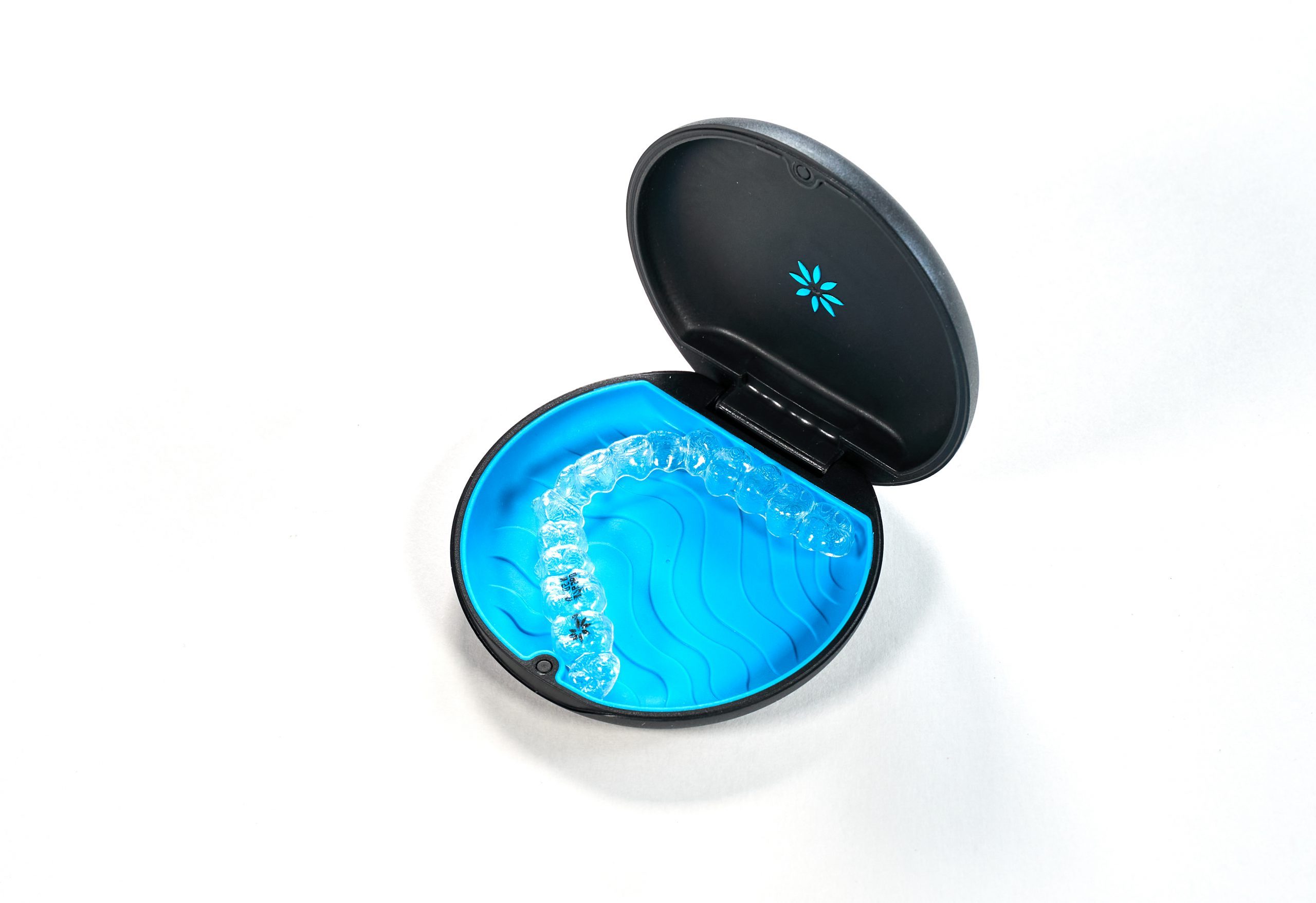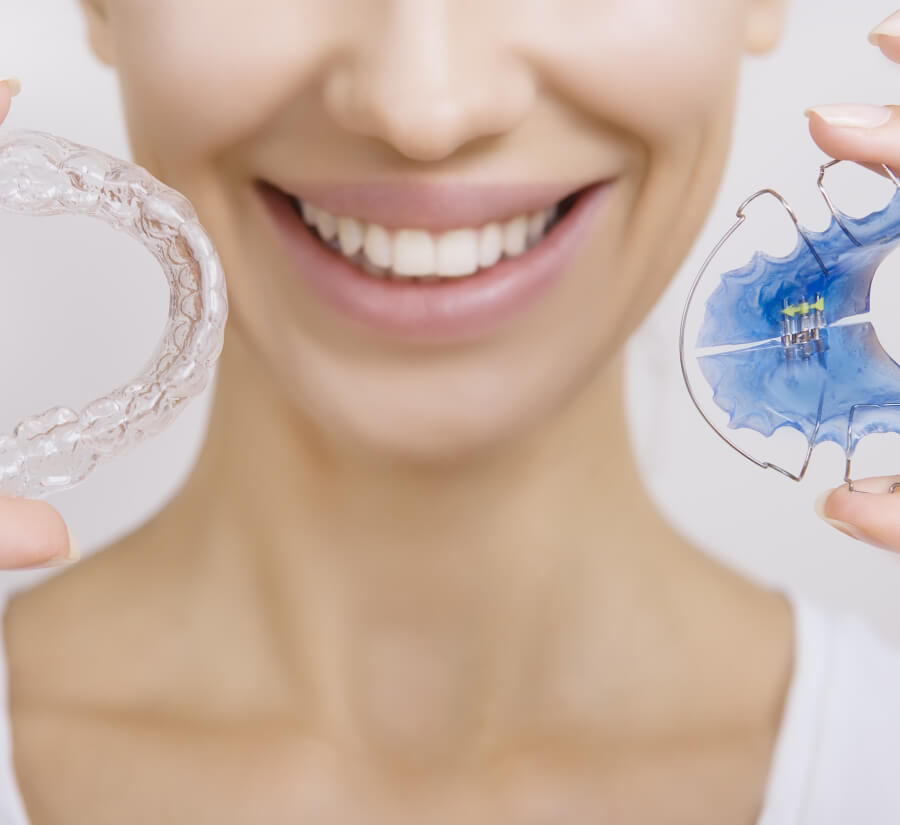Is Invisalign Treatment Right for You?
If you’re considering Invisalign as an orthodontic treatment option, consult with Dr. Stephen Grussmark in Miami, FL, to ensure you’re an ideal candidate. Invisalign is a popular and effective alternative to traditional metal braces, providing a more discreet and comfortable solution for many orthodontic issues. However, not everyone is a good candidate for Invisalign.
To learn more about Invisalign treatment and if it’s right for your smile goals, contact the office of one of the best orthodontists in South Florida at (305) 441-1200 today to schedule an Invisalign consultation.


Who Is the Ideal Invisalign Candidate?
The ideal Invisalign candidate is someone who has mild to moderate orthodontic issues. This includes crooked teeth, gaps between teeth, and mild bite problems. Invisalign can also fix some cases of overbites, underbites, and crossbites.
Invisalign is especially popular among adults who want to straighten their teeth but don’t want the metal wires and brackets associated with traditional braces. Invisalign clear aligners are made of clear plastic and are virtually invisible when worn.
What Invisalign Can Fix
Crooked and Crowded Teeth
If your teeth are crooked or crowded, Invisalign can gradually straighten them out over time. Crooked teeth can cause issues with biting and chewing, as well as negatively impact oral health treatment and your overall appearance. With Invisalign, treatment can help straighten your teeth and improve your oral health, while also giving you a more aesthetically pleasing smile.
Gaps Between Teeth
Invisalign trays can also close gaps between teeth. Gapped teeth can cause food to get stuck between teeth, increase the risk of gum disease, and affect your smile. Invisalign can help move your teeth closer together and close the gaps between permanent teeth, leading to improved oral health and a more confident smile.
Overbite
If your upper front teeth overlap your lower front teeth, this is called an overbite. An overbite can cause issues with speaking, eating, and jaw pain. Invisalign can correct this issue by gradually shifting your teeth into proper alignment, improving your bite, and reducing discomfort.
Underbite
An underbite can lead to issues with chewing, speech, and jaw pain. Invisalign trays can correct this issue by gradually shifting your teeth into proper alignment, improving your bite, and reducing discomfort.
Crossbite
If some of your upper teeth bite inside your lower teeth, this is called a crossbite. A crossbite can cause tooth wear, jaw pain, and even make your face look asymmetrical. Invisalign can fix this issue by gradually shifting your teeth into proper alignment, improving your bite, less tooth decay, and reducing discomfort.
Who Doesn’t Qualify for Invisalign?
While Invisalign can be a great option for many people, it’s not always the best choice. Invisalign may not be right for you if:
- Severe Orthodontic Issues: If you have severe orthodontic issues, such as a very large overbite or underbite, traditional braces may be a better option.
- Young Children: Invisalign is generally not recommended for young children whose teeth are still developing. However, teenagers with all of their adult teeth may qualify for Invisalign Teen.
- Complex Dental Issues: If you have complex dental problems, such as missing teeth, Invisalign may not be the right treatment, but alternative treatments like traditional metal braces may be better to treat your misaligned teeth.
- Poor Oral Hygiene: Invisalign requires good oral hygiene habits, including brushing and flossing after every meal. If you struggle with these habits or active gum disease, Invisalign may not be the best option for you.


Existing Restorations
If you’ve undergone restorative dental work, such as receiving a dental bridge or crown, you’ll need to have your teeth examined to ensure your restoration won’t interfere with Invisalign treatment. While it’s rare that a dental crown will cause any issues, a bridge may complicate the Invisalign treatment, making it difficult to achieve the results you’re looking for.
Ultimately, Dr. Grussmark will evaluate all restorations before treatment and determine eligibility on a case-by-case basis. You can schedule a consultation at our Miami office by contacting us at (305) 441-1200.
Frequently Asked Questions
To achieve the best results, it’s recommended that you wear your Invisalign aligners for at least 22 hours a day. You’ll need to remove them when eating, brushing your teeth, and flossing. Outside of those situations, wear them consistently as directed by your dentist to ensure that your treatment progresses as planned.
Invisalign aligners may affect your speech for the first few days of treatment. You may notice a slight lisp or difficulty pronouncing certain words. However, most people adjust to wearing the aligners fairly quickly and don’t experience any speech issues after the initial adjustment period. If you do experience persistent speech issues, be sure to talk to your dentist.
Yes, you can choose Invisalign over traditional braces, depending on your orthodontic needs. Invisalign offers nearly invisible alignment, comfort, removability for eating and oral hygiene, and reduced office visits. However, for complex orthodontic cases, such as severely crooked teeth or a misaligned bite, traditional braces might be more effective.
Achieve Straight Teeth Through the Invisalign Process Today
Invisalign treatment can transform your smile and improve your quality of life. If you think you may be an Invisalign candidate, contact our Diamond Pro Invisalign Provider today to schedule a consultation. Our Miami, FL, team is dedicated to helping you achieve the perfect smile, of your dreams and we are here to answer any questions you may have about Invisalign candidacy and treatment.
Take the first step towards a brighter, more beautiful smile, and seek orthodontic treatment today by calling (305) 441-1200! We also welcome patients from Miami Beach, Coral Gables, and Brickell.

